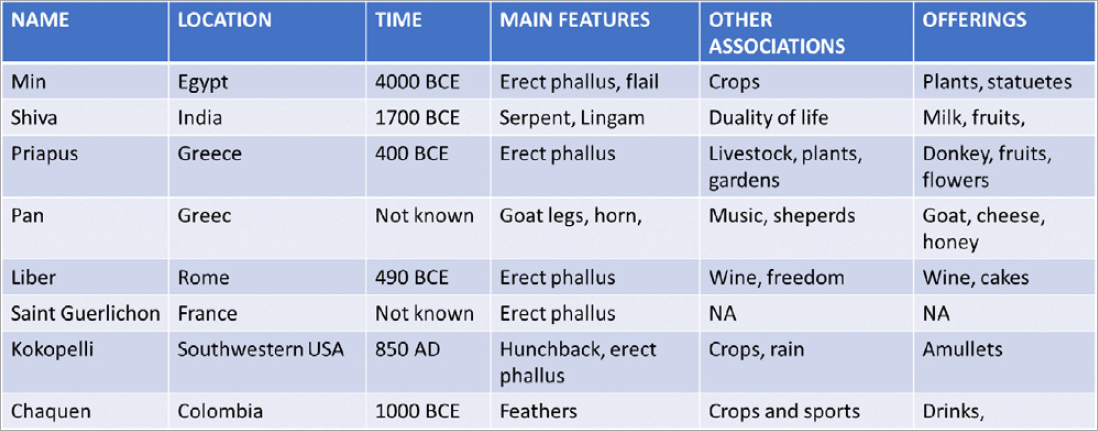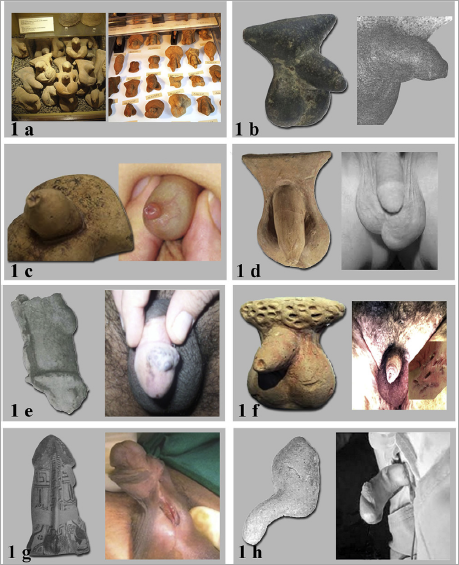Amerika Üroloji Kongresi, 18-21 Mayıs 2018 San Francisco
THE JOURNAL OF UROLOGY
May 21, 2018 Volume 199, Issue 4, Supplement
Vol. 199, No. 4S, Supplement, Monday, May 21, 2018
sexual performances, and offerings of phallic-shaped statutes, plants, and other objects were common. Amulets depicting the gods were used as a protection from infertility or diseases of the male genitalia.
CONCLUSIONS: Male fertility and virility deities were present in most mythologies, and, like their female counterparts, were some of the earliest gods worshiped, owing to their importance to some paternalistic societies. Offerings and rituals were the only options to deal with problems of reproduction at those times, and were a demonstration of how far people with such diseases could go seeking the cure. Some of these gods are still actively worshiped.

FR-07
UROLOGY AND SEXOLOGY IN GERMANY, 1900-1933
Matthis Krischel*, Thorsten Halling, Nils Hansson, Heiner Fangerau, Friedrich Moll, Dusseldorf, Germany
INTRODUCTION AND OBJECTIVES: Both urology and sexology began to develop as academic disciplines in the 19th century. They both became institutionalized in Germany in the early 20th century with the foundation of the German Society for Urology in 1907, the Berlin Society for Urology in 1912 and the Physicians’ Society for Sexology and Eugenics in 1913. Among the leaders of the latter society were dermato-venereologists like Alfed Blaschko (1858-1922), social hygienists like Alfred Grotjahn (1869-1931) and social reformers like Magnus Hirschfeld (1868-1935). A person who bridged urology and sexology was Carl Posner (1854-1928). He was founding co-president of the German Society for Urology and in 1920 became president of the Physicians’ Society for Sexology and Eugenics.Sexology in Germany was multidisciplinary and interdisciplinary from the beginning. The in-fluences of social movements, the social sciences and different medical specialties on the newly developing field will be described and ana-lyzes, with special attention to urology.
METHODS: Primary and secondary sources on the history of sexology as well as on the German Society for Urology, the Berlin Society for Urology and the Physicians’ Society for Sexology and Eu-genics are analyzed in a hermeneutical manner.
RESULTS: Together with other disciplines, urology played an important role in the development of academic sexology in Germany. Contributions included work on male sexual physiology, function and performance, on sexual health and on fertility and infertility.
CONCLUSIONS: The influence of urology on sexology in Germany has been underestimated. One example of scholars con-necting both fields is Carl Posner whose research interests included urology, sexual health and sexology.
Source of Funding: None
FR-08
ANCIENT UROGENITAL DISEASES IN THE LIGHT OF UROGENITAL VOTIVES
Ekrem Guner*, Sebnem Izmir Guner, Volkan Tugcu, Istanbul, Turkey
INTRODUCTION AND OBJECTIVES: When history of medi-cine was examined people have been seeking for cure in many different areas such as magicians, traveler healers, drug dealers, local hysicians, scientific Hippocratic physicians and the temples of the gods. Among these the most popular one was healing practices applied in temples of healer gods. In this article, we exhibited the male genital organ votives presented to gods expressing urogenital diseases mutually with pointed out diseases especially in the temples of ancient Greek and Roman periods.
METHODS: The ancient healer gods, ancient male urogenital diseases and the physicians who first described them were researched. Male urogenital votive samples representing a disease were researched, examined, and presented together with present-day equivalents.
RESULTS: Patients wishing treatment in the temples represent to gods their ill organs.(Figure1a) Among these, it was seen that some male genitalia votives represented some urogenital diseases. Both adult and child phimosis examples were also seen.(Figure1b,c)For the first time in 34 AD, mentioned by Celsus, varicocele was expressed in a votive exhibited in a gallery as the left testicle being lower and big-ger.(Figure1d)Two bumps on the Etrusco-Roman period penis votive exhibited in Italy, Castellana Archaeological Museum pointed out the penile hemangiomas.(Figure1e)The view of skin in the pubic area of the votive from ancient Greek period in Berlin Altes Museum, Germany brought to mind hidradenitis suppurativa lesions.(Figure1f)Hypospa-dias, for the first time in 4. century BC, was defined by Aristotle, Galen of Pergamon, in the 2nd century AD, has revealed the term hypospa-dias for this condition. The first representation of hypospadias have been identified in a unique the ancient Greek period phallus vase discovered in Egypt and exhibited in the British Museum, is a phallus vase without sample.(Figure1g)Apart from these, a votive phallus offered to Minoan Peak Temple in 3000 BC, probably representing Peyronie disease or penile curvature, has been viewed as a rare example.(Figure1h)
CONCLUSIONS: It was seen that very few of genital organ votives gave information about a disease. On these votive models, a disease was tried to be expressed by creating appearances repre-senting the illness. These very rare examples were remarkable visual evidences of ancient diseases.


